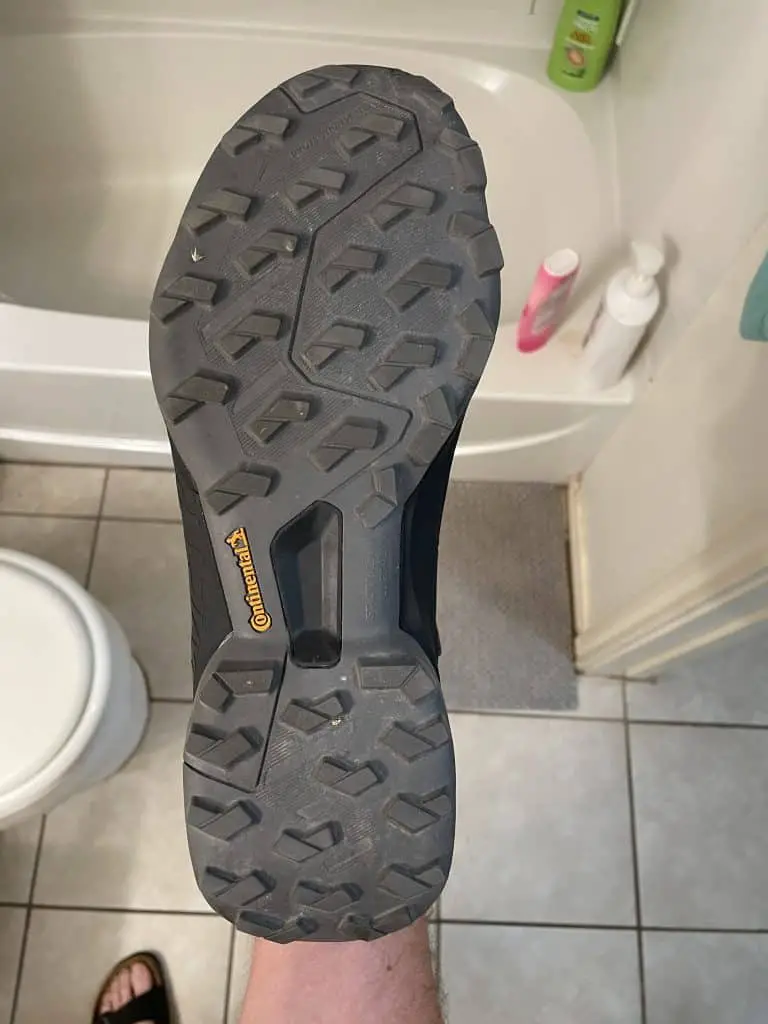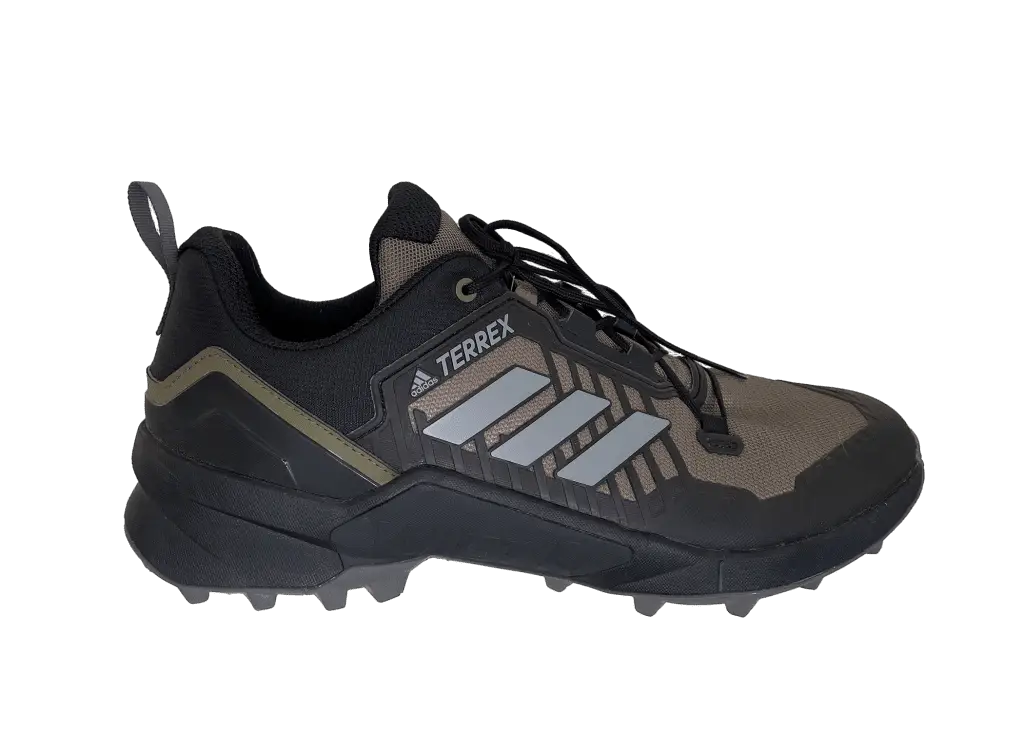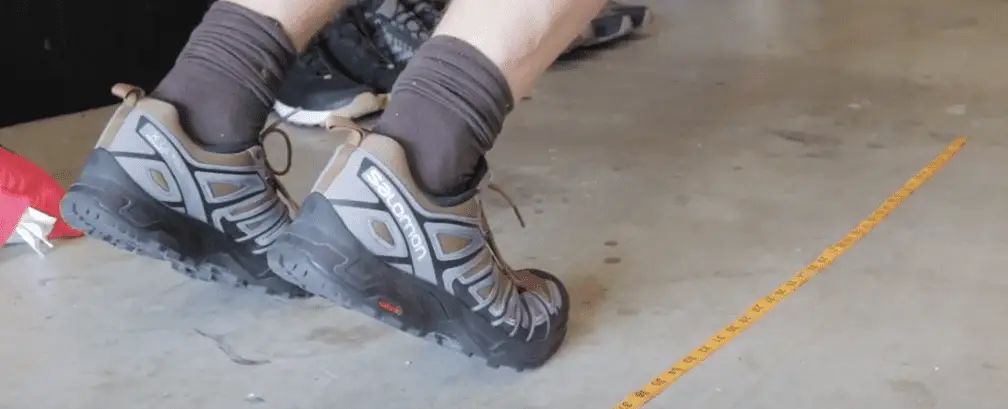Each year I purchase new hiking shoes and test them in the Dusty Hikers Advanced Footwear Research Laboratory, aka my garage and hiking trails. After all this experience, I can safely say that hiking shoes are different from ordinary shoes, providing an enormous performance boost for just a few dollars more.
Hiking shoes provide superior protection, traction, grip, comfort, and stability compared to other types of shoes. With hiking shoes, you can hike farther with less effort and less injury risk.
1. Hiking Shoes Provide Better Protection Than Regular Shoes
The anatomy of a modern hiking shoe is suited for the environment in which hikers operate. One of the most important reasons hiking shoes make a difference is because they provide more protection.
You will struggle to continue a hike if you have bruised the bottom of your foot on a sharp rock or have broken your toe because you stubbed it on a boulder.
Your standard hiking shoe will protect the bottom of your feet in two important ways.
- First, most hiking shoes have rock plates between the outsoles and the midsoles. You barely realize they are there, but these hard plastic plates stop rocks or thorns from injuring the bottom of your feet and keep you going.
- Second, hiking shoes protect the bottom of your feet because they usually have a thicker stack of materials through the outsole, midsole, and insoles. All of this material provides added protection for your feet.

Here I am testing various hiking shoes for protection against sharp objects. I step on stones and compare the shoes. You can see that testing in this video on my YouTube channel.
Nearly all hiking shoes will also provide more protection for the tops of your feet and your lower ankles compared to regular shoes.
Many hiking shoes have toe caps across the front that protect your toes from the blunt force trauma associated with accidentally kicking a rock while hiking.
Many hiking shoes will also have a rand that wraps around the sides of the shoe where the uppers meet the midsole. Rands are typically abrasion resistance materials that protect the sides of your feet.
Regular street shoes rarely have toe caps, rands, or rock plates.
2. The Lugs on Hiking Shoe Outsoles Provide More Traction
Traction is important while hiking because without it, you will be slipping or unable to climb some terrain. Traction is the ability of your hiking shoe to translate the force of your step into forward motion.
Unlike normal shoes, hiking shoes will have deeper lugs set in patterns for both uphill and downhill movement.
Lugs on hiking shoes can be from 2 millimeters to more than 4 millimeters deep. Under the forefoot, they are arranged in chevrons pointed toward the toe of the shoe. Under the heel, they are typically oriented in the opposite direction, with the chevrons pointed toward the heel.
When you move up a hill, these chevrons cup the terrain and help translate your step into forward motion with less slippage than normal shoes.
On a downhill descent, you will put more weight on your heels, so the chevrons are reversed to cup the terrain in the opposite direction.

The lugs of the Adidas Terrex Swift R3 are deep. You can see how the lugs under the front of the foot are oriented to cup terrain. Under the heel area, though, they are reversed. This maximizes traction when you put more weight on your heels, such as during a descent.
I wrote an article on the difference between traction and grip and why they are so important for your hiking shoes.
Hiking shoe companies have many different types of lugs and lug patterns. They are designed to maximize traction, keep you from slipping, and allow you to ascend and descend outdoor terrain.

The shoes with the best traction I have tested recently are the Adidas Terrex Swift R3. They have deep, rigid lugs. You can check out my full review of these shoes.
3. The Compounds in Hiking Shoe Soles Provide Better Grip
The most important difference between hiking and regular shoes is the increased grip you experience on all surfaces.
Grip is similar to traction but different. Grip is the ability of your hiking shoe to stick to a surface. Whereas traction is important for climbing hills with loose debris, grip is critical for scampering over boulders.

Here I am testing various hiking shoes for grip. Vibram always wins. You can see that testing in this video on my YouTube channel.
I prioritize a grippy outsole over every other consideration when testing and scoring hiking shoe performance. You will easily slip and fall without adequate grip from your hiking shoe soles. Falling on a sidewalk is dangerous, but falling on a mountain trail can be deadly.
After testing many different shoes with many different compounds in the soles, I have found that the Vibram soles are the best across more types of terrain. Vibram Megagrip outperforms Quantum Grip from Merrell and Contragrip from Salomon, which is so poor I call it ‘Contaslip.’
Because the compounds used in hiking shoes are more expensive, normal street shoes usually don’t feature them. Spending a few extra dollars for a hiking shoe with a quality sole is money well spent.
The Vasque Satoru Trail LT has the grippiest sole I tested recently. You can price them and purchase them here. I have been wearing these shoes on every hike because of their comfort. Check out my review of them here.
4. Most Hiking Shoes Are More Comfortable Than Regular Shoes
Of all the parameters that I test on hiking shoes, comfort is the most difficult. Defining comfort is problematic. It is hard to describe to someone, but you know it instantly when you wear comfortable shoes.
When comparing all hiking shoes in the aggregate to all other regular street shoes, I think most people would find that hiking shoes are generally more comfortable. I know I do.
One characteristic that separates hiking shoes from regular street shoes is the presence of high-quality, bouncy midsoles. The extra bounce and comfort afforded by hiking shoes mean they will be more comfortable than regular shoes.
Midsoles are sandwiched between the outsoles and the uppers of hiking shoes.
In 2019 I completed the Ausangate Trek in Peru. We walked for 7 to 8 hours daily, conquering passes at more than 16,000 feet. I was wearing sneaker boots from Danner that were extremely comfortable. The Danner Mountain 600 hiking boots made all the difference in the world.
You can check out my review of these excellent hiking boots.

5. Hiking Shoes Provide Greater Stability on Uneven Surfaces
Many people ask whether they can hike in running shoes. Sure. Go ahead; for most outings running shoes will probably be fine. Here is my advice.
Do not hike in running shoes. They are designed for flat, even surfaces. The soles on running shoes, especially under the heel, extend laterally beyond the width of the uppers. If you start to roll your ankle, the potential injury could be much greater than if you wore hiking shoes.
But hiking shoes do more. They are designed to provide superior lateral stability on uneven ground to avoid rolling your ankle in the first place.
The Pro-moderator midsole in the Adidas Terrex Swift R3 is very stable. They provide excellent lateral stability thanks to a rigid plastic system that cups your feet.

You can see the Pro-moderator midsole system in the Adidas Terrex Swift R3. The midsole is the area above the sole (in gray) but beneath the uppers (in green and silver) that appears as molded plastic.

